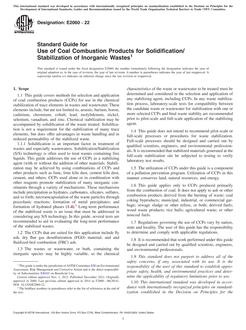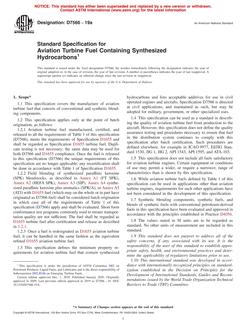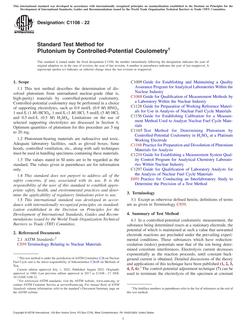1.1 This guide covers the preparation, equipment, calibration of equipment, location of test points, magnitudes and configurations of applied loads, cyclic frequencies, and presentation of data for nondestructive testing of pavements using cyclic-loading dynamic deflection equipment.
1.2 Cyclic-loading dynamic deflection equipment includes a group of devices that induce a steady-state sinusoidal vibration in the pavement through cyclic generation of a dynamic load. All such devices apply a static load on the pavement surface, resulting in a static deflection, and then induce some sinusoidal load and consequent deflection around the static load and deflection through an applied steady-state dynamic load.
1.3 As there are great differences between various cyclic-loading dynamic deflection devices, this guide is intended to give uniformly-applicable guidance, rather than specific instructions, for their use. For instance, it will specify that calibration of the devices and their instrumentation be carried out at the frequencies and in accordance with procedures recommended by their manufacturers, rather than providing specific instructions. Also, data is specified for collection that should prove adequate for usual applications of such deflection data, but no procedures are included for “back-calculating” elastic moduli of pavement layers or other such applications.
1.4 This guide does not apply to static deflection equipment, such as the “Benkelman Beam,” automated beam deflection equipment, such as the “California Traveling Deflectometer,” or impulse deflection equipment, such as the “Falling Weight Deflectometer.”
1.5 It is common practice in the engineering profession to use concurrently pounds to represent both a unit of mass (lbm) and of force (lbf). This implicitly combines two separate systems of units, that is, the absolute system and the gravitational system. It is scientifically undesirable to combine the use of two separate sets of inch-pound units within a single standard. This guide has been written using the gravitational system of units when dealing with the inch-pound system. In this system, the pound (lbf) represents a unit of force (weight). However, the use of balances or scales recording pounds of mass (lbm), or the recording of density in lbm/ft 3 should not be regarded as nonconformance with this guide.
1.6 This standard does not purport to address all of the safety concerns, if any, associated with its use. It is the responsibility of the user of this standard to establish appropriate safety and health practices and determine the applicability of regulatory limitations prior to use.
1.7 This guide offers an organized collection of information or a series of options and does not recommend a specific course of action. This document cannot replace education or experience and should be used in conjunction with professional judgment. Not all aspects of this guide may be applicable in all circumstances. This ASTM standard is not intended to represent or replace the standard of care by which the adequacy of a given professional service must be judged, nor should this document be applied without consideration of a project’s many unique aspects. The word “Standard” in the title of this document means only that the document has been approved through the ASTM consensus process.
Product Details
- Published:
- 09/15/1993
- Number of Pages:
- 4
- File Size:
- 1 file , 69 KB


